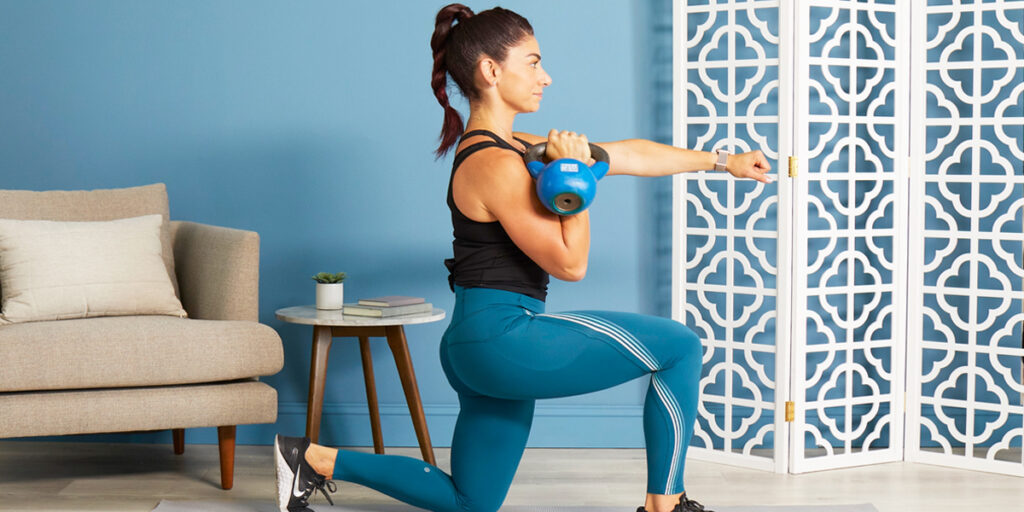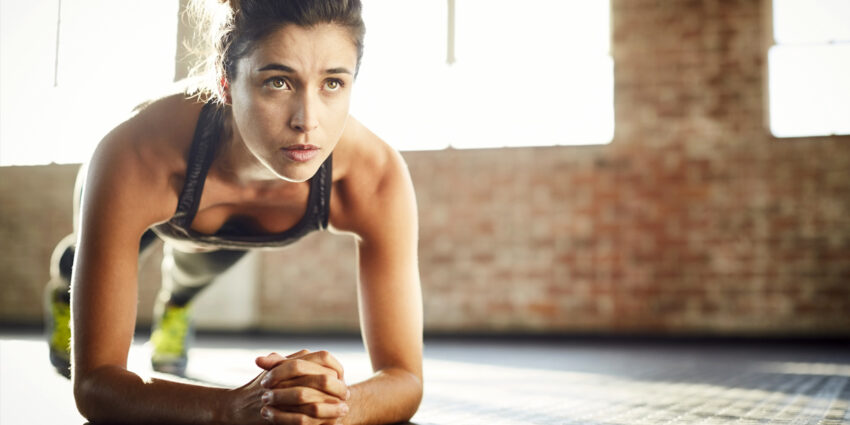Weight loss is a common goal for many people, but not all exercise programs are created equal. Traditional weightlifting and cardio workouts are important for overall fitness, but functional training is a type of exercise that can help you achieve weight loss in a more comprehensive and efficient manner.
Functional training is a type of exercise that focuses on using multi-joint, multi-muscle movements to improve functional movements in daily life. This type of training emphasizes the use of dynamic and compound movements that mimic real-world activities and engage multiple muscle groups at once.
In this article, we will explore the benefits of functional training for weight loss, and overall health. Whether you are a beginner or an experienced athlete, functional training can help you reach your weight loss goals and improve your overall fitness.
What is Functional Training?
Functional training is a type of exercise that emphasizes the use of multi-joint, multi-muscle movements that improve functional movements in daily life. These exercises are designed to mimic real-world activities and can be adapted to each person’s needs and goals. Unlike traditional weightlifting, which focuses on isolating specific muscle groups, functional training engages multiple muscle groups at once, leading to a more comprehensive and efficient workout.
Benefits of Functional Training (Weight Loss)
Improved Functional Movements
Functional training can help improve everyday movements, such as carrying groceries or playing with your kids. By strengthening the muscles used in these activities, you can reduce the risk of injury and improve your ability to perform these tasks with ease.
Full-Body Workout
Functional training provides a full-body workout in a more efficient and time-efficient manner. By engaging multiple muscle groups at once, you can achieve a more comprehensive workout in less time, allowing you to achieve your weight loss goals faster.
Increased Calorie Burn
The dynamic movements used in functional training can increase calorie burn and help with weight loss. By engaging multiple muscle groups at once, functional training can lead to a higher calorie burn than traditional weightlifting or cardio workouts.
Improved Balance and Stability
Functional training can help improve balance and stability, reducing the risk of falls and injuries. By challenging your body in new and dynamic ways, functional training can help you build a stronger foundation and improve your overall fitness.
Enhanced Athletic Performance
By improving functional movements, functional training can also help improve athletic performance in sports and other physical activities. Whether you are a runner, a basketball player, or just looking to stay active, functional training can help you achieve your performance goals and reach your full potential.
Best Functional Training Exercises to Lose Fat

Some common examples of functional training for weight loss exercises include:
Squats
Squats are a functional training exercise that targets the muscles in the legs and glutes, including the quadriceps, hamstrings, and calf muscles. This exercise is a multi-joint movement that helps improve functional movements, balance, and stability, making it a great exercise for weight loss.
To perform a squat, stand with your feet hip-width apart and your hands on your hips. Lower your body down as if you were going to sit back into a chair, keeping your weight in your heels and your knees behind your toes. Push through your heels to return to the starting position.
There are several variations of squats, including bodyweight squats, barbell squats, and kettlebell squats, each offering a slightly different challenge and targeting different muscles.
Lateral Lunge
The lateral lunge exercise targets the muscles in the legs, including the glutes, quadriceps, and hamstrings. This exercise helps improve balance and stability, as well as strengthen the lower body.
To perform a lateral lunge, stand with your feet hip-width apart and your hands on your hips. Take a step to the side with one foot, keeping the other foot stationary. Lower your body down into a lunge position, keeping your knee bent and your weight on the heel of the foot that stepped out. Push through the heel of the stepped-out foot to return to the starting position. Repeat the movement on the other side.
Incorporating the lateral lunge into your workout routine can help improve your functional movements, balance, and stability, making it a great exercise for weight loss. It’s important to use proper form and start with a lighter weight or body weight before adding weights to the movement.
Kettlebell Swings
Kettlebell swings targets the muscles in the hips, legs, and back, including the glutes, hamstrings, and lower back muscles.
To perform a kettlebell swing, start by standing with your feet hip-width apart and a kettlebell on the ground in front of you. Hinge at the hips, grabbing the kettlebell with both hands and swinging it back between your legs. Quickly reverse the movement, using your hips to drive the kettlebell up and out in front of you, keeping your arms straight. Lower the kettlebell back down and repeat the movement.
Plank
The plank targets the muscles in the core, including the abs, obliques, and lower back muscles.
To perform a plank, start by getting into a push-up position, but instead of lowering your body down to the ground, hold your body steady and maintain the push-up position, with your weight supported by your forearms and toes. Hold this position for 30-60 seconds, keeping your body straight and your core engaged.
Pull-ups
Pull-ups target the muscles in the back, shoulders, and arms, including the lats, biceps, and forearms. This exercise helps improve upper body strength, making it a great exercise for weight loss.
To perform a pull-up, find a pull-up bar and grasp it with your palms facing away from your body. Hang from the bar with your arms fully extended and your feet off the ground. Pull your body up towards the bar, keeping your body straight and your elbows close to your sides. Lower your body back down to the starting position, keeping your arms straight.
Box Jumps
Box jumps target the legs, including the quads, hamstrings, and calf muscles. By incorporating box jumps into your workout routine, you can improve your explosive power and overall fitness.
To perform a box jump, stand in front of a sturdy box or platform with your feet hip-width apart. Lower your body down into a quarter squat, then quickly jump up onto the box, landing with both feet on the surface. Step or jump back down to the starting position and repeat the movement.
Dead Lift
The deadlift is a training exercise that targets the muscles in the legs, back, and core. Incorporating the deadlift into your workout routine can help improve overall strength, power, and stability, making it an effective exercise for weight loss. This exercise challenges multiple muscle groups, increasing calorie burn and helping you to build lean muscle mass.
To perform a deadlift, start with a barbell on the ground, feet hip-width apart, and grasp the bar with a shoulder-width grip. Lower your hips and bend your knees, keeping your back straight, then lift the bar off the ground, straightening your hips and legs until you are standing upright. Lower the bar back down to the starting position, keeping your back straight and your knees slightly bent.
Recommended Tools For Functional Training for Weight Loss
- Resistance bands: Resistance bands are a versatile and portable tool that can be used to add resistance to a variety of training exercises, including squats, lunges, and rows.
- Kettlebells: Kettlebells are a popular tool for functional training and can be used for exercises such as swings, deadlifts, and goblet squats.
- Medicine balls: Medicine balls can be used for a variety of functional training exercises, such as slams, Russian twists, and wall balls.
- Foam rollers: Foam rollers can be used for self-massage and stretching to help improve flexibility, reduce muscle soreness, and enhance recovery after functional training exercises.
- Dumbbells: Dumbbells are a classic weightlifting tool that can be used to add resistance to a variety of functional training exercises, including squats, lunges, and bench presses.
- Suspension trainers: Suspension trainers, such as TRX, can be used for a variety of training exercises, including rows, squats, and lunges.
- Stability balls: Stability balls can be used for exercises such as Russian twists, wall balls, and balance exercises.
Using these tools and gadgets can help you add variety to your functional training routine, challenge your muscles, and improve overall fitness and weight loss results.
Note: It’s important to use proper form and start with lighter weights or lower resistance, and gradually increase as you build strength and confidence.
Functional Fitness Workout Helps Improve Your Daily Life Routine
Functional training exercises can improve your daily life chores by enhancing your functional movements and overall fitness. Here are a few ways functional training can help:
- Improved posture: By targeting the muscles in your core, back, and legs, functional training exercises can help improve your posture and reduce the risk of injury when performing daily chores.
- Increased strength: These exercises help improve strength and stability in the muscles used for everyday movements, such as lifting, carrying, and pushing. This can make performing daily chores easier and less tiring.
- Better balance: By improving balance and stability, functional training exercises can help you maintain proper form and avoid injury when performing chores that require focus and balance.
- Reduced risk of injury: By improving functional movements, functional training exercises can reduce the risk of injury, especially when performing tasks that require repetitive motions.
- Increased energy and endurance: Regular functional training exercises can increase energy levels and endurance, allowing you to complete your daily chores with more energy and efficiency.
Incorporating functional training exercises into your daily routine can help improve your overall fitness and well-being, making it easier to perform daily chores and live an active, healthy lifestyle.
Is It For Everyone?
Functional training exercises can be suitable for a wide range of people, but it’s important to consider individual fitness levels and medical conditions. Some people may benefit from functional training more than others, but it is always recommended to consult with a medical professional or qualified personal trainer before starting any new exercise routine.
For healthy individuals, functional training exercises can provide a comprehensive workout that improves strength, stability, and functional movements. However, for those with certain medical conditions, such as back problems, joint pain, or cardiovascular issues, functional training exercises may not be suitable or may need to be modified to accommodate individual needs.
People with limited mobility, injuries, or disabilities may also benefit from functional training exercises, but it’s important to work with a qualified professional who can help design a safe and effective workout program.
Conclusion on Functional Training for Weight Loss
Functional training is a type of exercise that focuses on using multi-joint, multi-muscle movements to improve functional movements in daily life. With its emphasis on dynamic and compound movements, functional training can provide numerous benefits for weight loss, including improved functional movements, a full-body workout, increased calorie burn, improved balance and stability, and enhanced athletic performance. Whether you are a beginner or an experienced athlete, functional training can help you reach your weight loss goals and improve your overall fitness.

